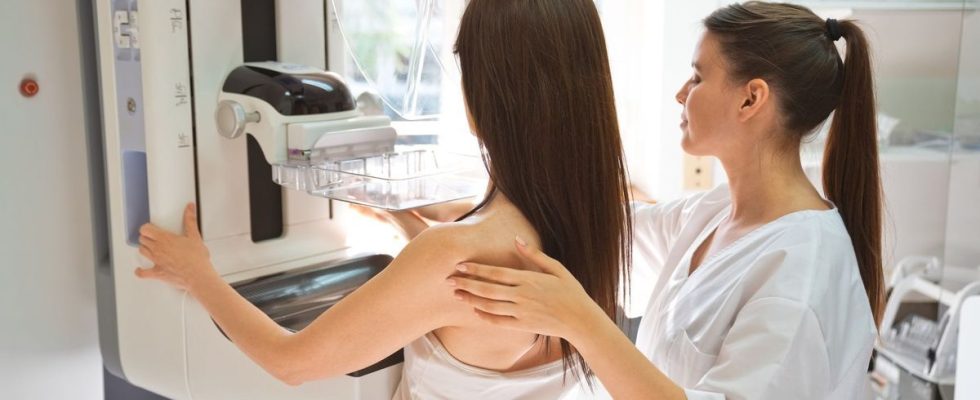Published on
Updated
Reading 3 mins.
As part of the organized screening for breast cancer in women, the High Authority for Health recommends the introduction of 3D mammography, by tomosynthesis, provided that it is systematically associated with the reconstruction of a synthetic 2D image.
First cause of death by cancer in women with more than 12,000 deaths per year, breast cancer can be detected by organized follow-up in women aged 50 to 74. Carried out by a 2D mammography until now, the new recommendations of the HAS associate these shots with a 3D tomosynthesis.
Tomosynthesis added as a recommendation for screening
This screening consists of a mammogram performed every two years, in these women aged 50 to 74 years. This mammogram is a digital examination carried out in two dimensions.
Tomosynthesis is another mammography technique that makes it possible to obtain a digital image reconstructed in 3D from images of the breast obtained under different sections. This exam has been integrated since 2009″screening women at high risk of breast cancer, or in those whose disease is proven” recalls the HAS.
The question arose for her to integrate this examination into conventional screening and after studying the question, the examination was finally added to the official recommendations.
An in-depth study before reporting its conclusions
To make its decision, the HAS explains that it “compared the classic mammography technique (2D) to the tomosynthesis technique (3D) alone, then to the combination of the two techniques (3D + 2D), and finally to the 3D technique associated with a synthetic image reconstruction (2Ds) . It analyzed the results of these comparisons according to several criteria: cancer detection rate, sensitivity and specificity of screening, rate of false positives, patient recalls for additional examinations after mammography and interval cancers..
According to her, “the comparison between 3D and 2D alone did not highlight any data in favor of the use of 3D alone, nor any difference in performance between the two techniques. On the other hand, although presenting better results , the association of 3D with conventional mammography (3D + 2D) induces greater exposure to X-rays, due to the double irradiation that these examinations represent for women, reproduced every two years”.
The most reasonable choice was made by the health authority
In making this choice, the HAS indicates that it has opted for the best compromise: “Studies on 3D combined with 2Ds, a less irradiating method which also allows second reading, have on the other hand shown encouraging results. This procedure makes it possible to improve the performance of organized screening, in particular its cancer detection rate, without increasing the number of imaging procedures and the exposure dose. she explains.
“As a result, the HAS recommends the integration of tomosynthesis mammography into organized breast cancer screening, provided that it is systematically associated with the reconstruction of a synthetic 2D image (3D + 2Ds). of the progressive deployment of 3D+2Ds in organized screening throughout the national territory, HAS recommends maintaining the current procedure based on digital mammography (2D)”.
The opinion of Dr Caroline Malhaire, radiologist at the Institut Curie
“This announcement from the HAS was long awaited by radiologists because tomosynthesis has shown its contributions, in particular on the number of breast cancers detected, which is increased. But also on a technical level with interesting performances in 3D. Tomosynthesis also allows a reduction in false positives, because sometimes in 2D it can feel like you are detecting cancer when it is just a woman with dense breasts… So this reduces the worry that one can have as a professional, but also of course for patients. Finally, the HAS offers a good compromise by avoiding double irradiation for patients. By reconstructing a synthetic 2D image from the tomosynthesis images, the images are easy to print or share, which also makes it possible to retain double reading for organized screening“.
